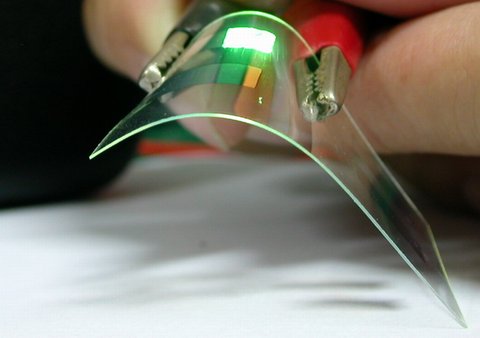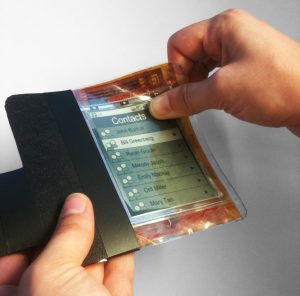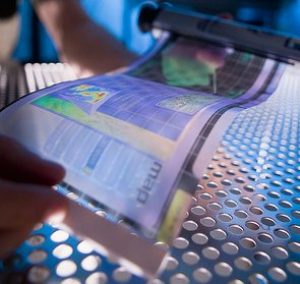
It looks like something straight out of a sci-fi movie. A screen as thin as a credit card displays videos in crystal clear resolution. Then, as if that’s not enough, a lady pushes the screen from behind and it rolls like a piece of paper.
The dominant theme among tech companies over the last few years has been thinner, thinner, thinner. They want to push stronger technology into a thinner package. The laptop I’m writing on right now is less than half an inch thick.
While many see Apple as the company leading the charge, it’s actually Samsung who seems to have the lead in the race. Not only do they have prototypes of television sets and phones that are paper thin, the devices even behave much like paper.
However, as with any technology, once one company reveals something new, others start to catch up. A number other companies have also recently released plans for flexible display phones, including Lenovo and Moto Z.
As the flexible display technology rage is set to hit the stage, let’s take a look at what it means and why.
How does it work?
This was my first question when I saw that video of the woman bending a TV display. My first thought was that it must be sorcery, but luckily I decided to dig a little deeper than that.
The flexible display technology has actually been around for a few years. In fact, a company called Human Media Lab had a prototype phone called the Paper Phone way back in 2011. Rather than using a touch display, it used “bend gestures” to navigate the system, showing that the flexible technology can be more than just a party trick.

The technology is still fairly new, but it’s often being referred to as “e-paper.” It’s made by using flexible conductors, rather than the structurally solid guts that we’re used to seeing on a desktop computer’s motherboard, for example.
The power is limited due to the device’s thin nature, as you can clearly see by how basic the Paper Phone looks compared to other phones in 2011. However, as technology continues to grow exponentially, we’re able to fit stronger stuff into a smaller package. Now companies are seeing a realistic future of releasing powerful, paper thin, flexible phones and TVs.
One great advantage to the manufacturing process is that these devices are quite literally printed. Making them in this way is cheaper than the standard way modern phones are produced. In a way that feel impossible, we may experience a leap in both quality and affordability of technology in the very near future.
Why should we care?
First, you should care because it’s awesome. And I’m only half joking.

When people invent something completely new, they often have no concept of the wealth of uses that lay in store for it. The Swiss inventor of Velcro had no idea his simply idea would one day be used in NASA space missions.
At the very least, we can see that the future holds portable TVs that can be rolled up for storage and placed anywhere onto a wall like wallpaper.
We can see flexible phones that, on top of standard touch screen functionality, also feature input through bending. This could unlock entire new ways of interacting with your phone. Imagine a smartphone that becomes a smartwatch by wrapping it around your wrist. Imagine a phone that becomes a VR device by turning it sideways and bending it in.
The point is that this is new. Any concept of where this will take us is pure conjecture, but it will provide yet another way for creative minds to help us experience our world.
In Short
Flexible display screens are coming soon. Samsung has even said they may have a flexible screen phone ready for 2017.
It’s a technology that you should keep your eyes on for future development, and most of that development is happening in South Korea. LG and Samsung both have prototypes available with a development called Optical Light-Emitting Diode (OLED).
If you’re hoping to see more development, those are the companies that will take us there.




